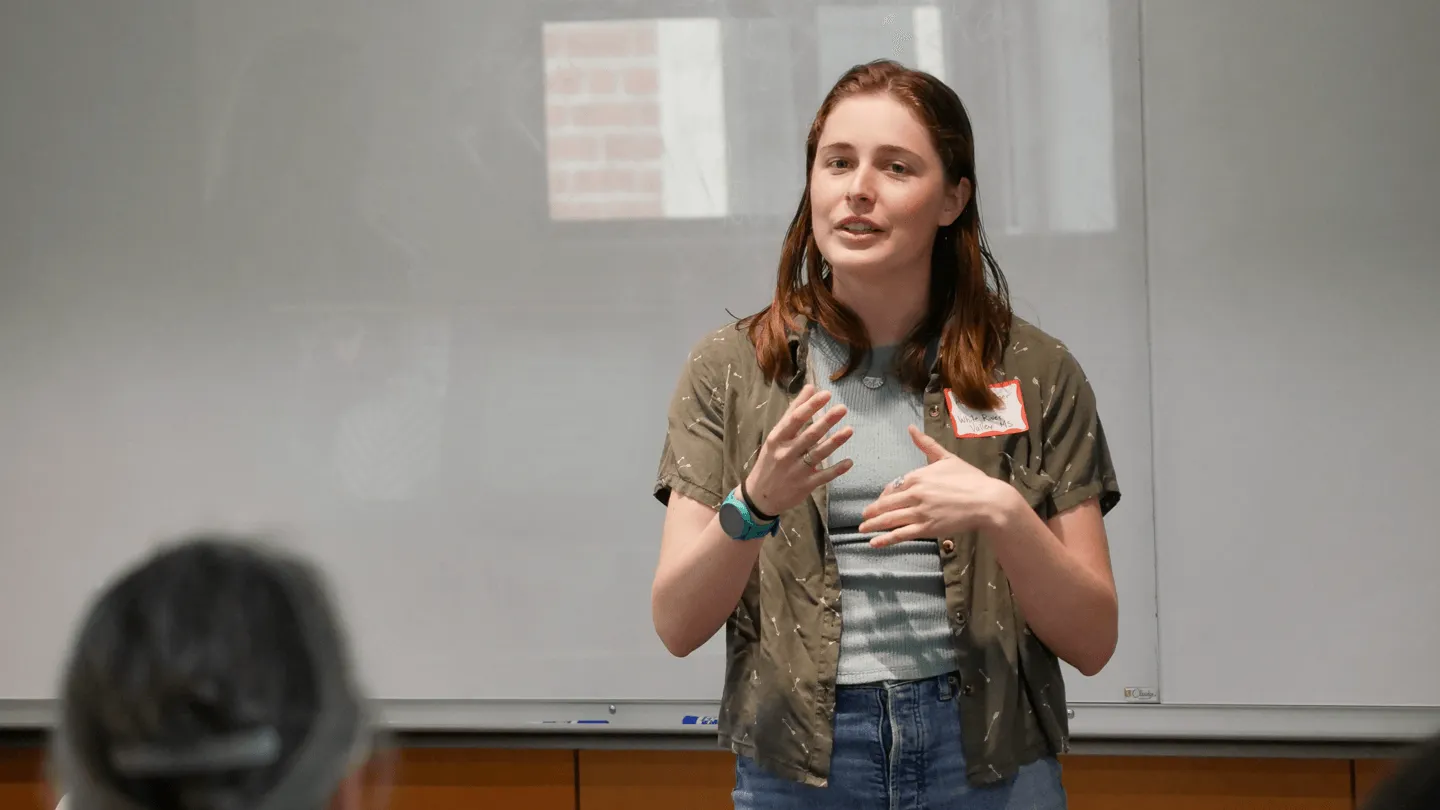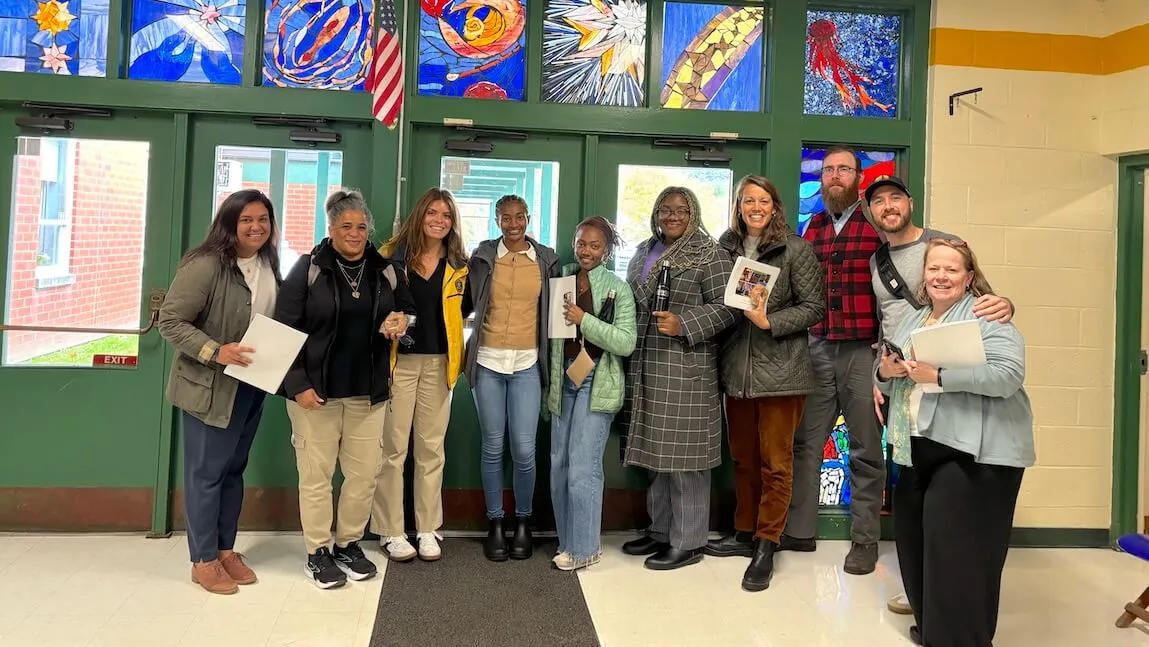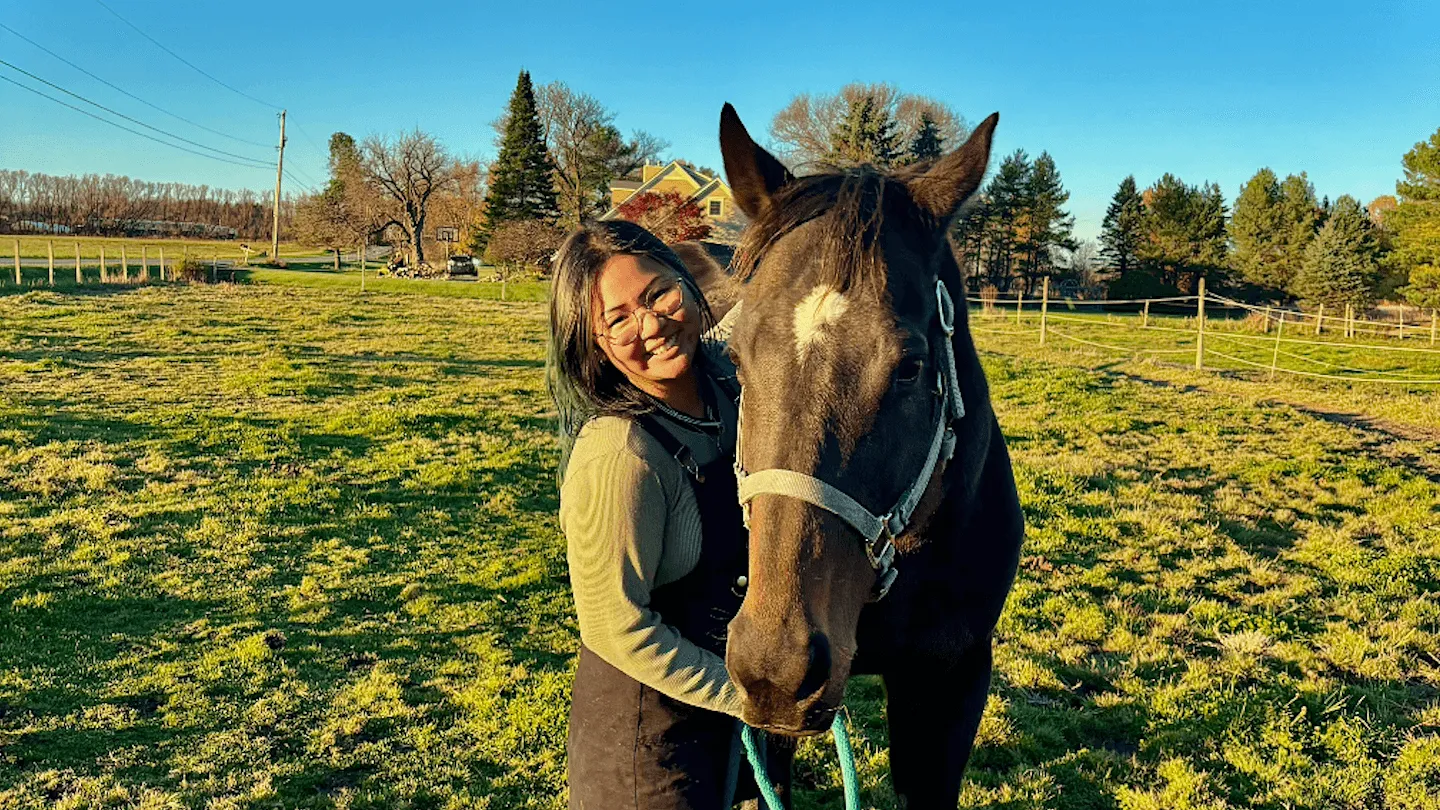Last Friday, the Leahy Center for Rural Partnerships hosted students, faculty and community partners to showcase the Catamount Community Schools Collaborative’s (CCSC) first-ever intern celebration. The event highlighted students who engaged in learning projects to strengthen connections between schools and surrounding communities in rural Vermont.
“Community school is a place-based approach to school to recognize that schools can be hubs of community; not just places of learning, but places of active engagement, resiliency, and hope,” said CCSC Principal Investigator Bernice Garnett. “It’s done through streamlining resources and partnering with communities and families in authentic ways. At the University of Vermont, we’re honored to ask how we can support, share resources, and do this together.”
What is a Community School?
In 2021 Vermont passed Act 67, creating an established definition for community schools and providing federal funding to support the state’s pilot program. The state has seen promising results in that time, with deeper community connection and significant increases in student attendance. Federal funds for the program are set to terminate this summer, making UVM’s support for this program even more critical.
Highlights of students in action
Ada Gardner ‘26, a junior in the College of Education and Social Services, worked alongside local teachers at White River Valley Middle School to support outdoor education electives, including cross-country skiing programs and a hands-on boat-building class. The school’s permaculture-designed orchard and tree nursery, developed with local conservation groups, serve as outdoor classrooms and community assets. “It’s incredible to see students, especially those who might struggle in traditional settings, find their strengths through these place-based experiences,” Gardner said.
Cynthia Herbert ‘29, a second-year doctoral student in social, emotional, and inclusive education, spent the past year working in Newport’s Town School supporting an intergenerational meals program and conducting research with elders, educators, and children. “This is my second career,” Herbert shared. “I worked for 20 years as a mental health counselor, and it’s powerful to see these connections being made through schools.”
Grace Stannard ‘26, a public health major in the College of Nursing and Health Sciences, helped develop a student-run wellness program, providing a calming space for students to manage stress and access mental health resources. “These enrichment programs get students outside and offer different kinds of experiences,” Stannard said. “Some students who don’t thrive in a traditional classroom are really engaged in seeing projects through.”
Nova Mordecai ‘26, a graduate student in UVM’s counseling master’s program, spent the semester working as a school-based clinician at Union Elementary in Vergennes. “There’s this existing concept of what school looks like,” said Mordecai. “You drop kids off and pick them up. But community schools bring the community into families’ lives. In Vergennes, they have a public ice rink on school grounds. During the day, it’s used for PE classes, and after school, it’s open to the community. If you don’t have access to these things in your own backyard, the school becomes an extension of it.”
A model for an uncertain future
As the CCSC pilot year draws to a close, the impact of the community school model for Vermont is undeniable. It has defined at a state level how to approach school structure and community building, how both support the state, and how critical community engagement is to the program’s success.
“I think we're really in a sweet spot of leveraging university resources and place-based partnerships with our community schools for transformative benefits for both our students and our community partners,” said Garnett. “And we are committed; this is all of our life’s work.”


